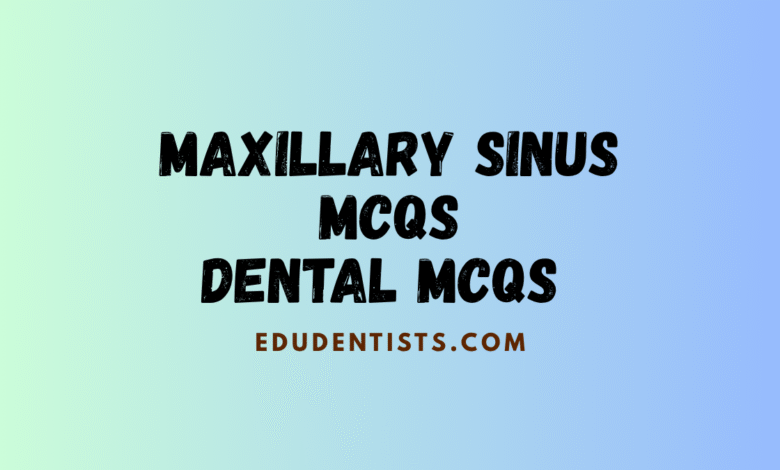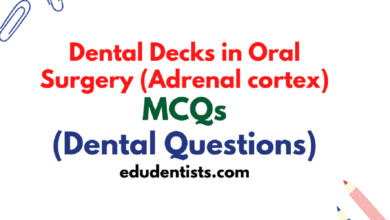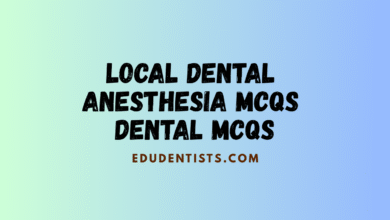Oral and Maxillofacial Surgery MCQs
Maxillary Sinus MCQs- Dental MCQs
Maxillary Sinus MCQs- Dental MCQs

Maxillary Sinus MCQs- Dental MCQs
Maxillary Sinus Multiple Choice Questions
- Nasal antrostomy usually done through:
A. Middle concha
B. Inferior meatus
C. Inferior concha
D. Middle meatus - The maxillary sinus lies directly above which of the following teeth?
A. Incisors
B. Canine
C. Premolars
D. Molars - Which is the most common tooth that overfilling may force materials directly into the maxillary sinus:
A. Maxillary second premolar
B. Maxillary first molar
C. Maxillary first premolar
D. Facial root maxillary first premolar - The radiographic feature of maxillary sinusitis include:
A. Fluid levels
B. Clouding of antra
C. Clouding and fluid level
D. Erosion of bone - Oroantral fistula in maxillary third molar region is best treated by:
A. Buccal mucoperiosteal flap
B. Bridge flap
C. Palatal island flap
D. Palatal mucoperiosteal flap - During extraction of a maxillary molar, a root tip is left in the maxillary sinus. The treatment of choice is:
A. Perform Caldwell Luc to remove the tip
B. Perform hemi maxillectomy
C. Enlarge opening in the socket area
D. No treatment indicated - Entrance into the sinus in a Caldwell procedure is made through the:
A. Canine fossa
B. Malar eminence
C. Zygomatic ridge
D. Tuberosity - Oroantral fistula most commonly occurs during extraction of:
A. Maxillary first premolar
B. Maxillary second premolar
C. Maxillary first molar
D. Maxillary third molar - An oroantral communication during extraction:
A. Require no treatment immediately
B. Immediate prolapse of antral lining occurs into mouth
C. Reflux of fluids into the nasal cavity while drinking can be demonstrated
D. Must be closed immediately - Maxillary sinus drains into the:
A. Sphenoethmoidal recess
B. Superior meatus
C. Middle meatus
D. Inferior meatus - Which of the following symptoms are related to maxillary sinusitis?
A. Tenderness over the involved area
B. Postnasal drip
C. Change in phonation
D. All of the above - Berger flap procedure is used in the management of :
A. TMJ ankylosis.
B. TMJ dislocation.
C. Oro-antral communication.
D. Pericoronitis - Which of the following symptoms are related to oroantral communication?
A. Escape of fluids from mouth to nose on the side of extraction
B. Unilateral epistaxis
C. Excruciating pain in and around the sinus
D. All the above - Indication of Caldwell-Luc operation:
A. Chronic maxillary sinusitis
B. Fracture floor of the orbit
C. Vidian neurectomy
D. All the above - Nasal antrostomy Caldwell-Luc procedure is created:
A. Above superior turbinate
B. Above inferior turbinate
C. Beneath superior turbinate
D. Beneath inferior turbinate - During extraction of maxillary second molar, a 0.5 mm perforation into maxillary sinus was made. The appropriate treatment is:
A. Caldwell luc procedure
B. Smooth the bone and place suture across socket
C. Pack the opening with iodoform gauge and allow to heal by secondary intention
D. No treatment necessary





